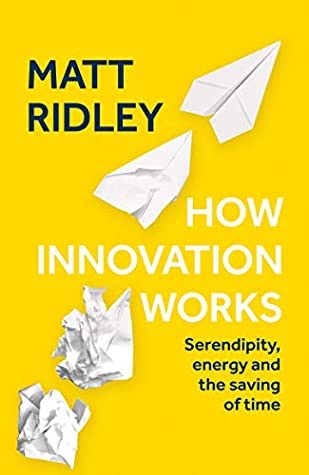More on this book
Community
Kindle Notes & Highlights
by
Matt Ridley
Started reading
August 1, 2020
Improbable arrangements of the world, crystallized consequences of energy generation, are what both life and technology are all about.
Innovations come in many forms, but one thing they all have in common, and which they share with biological innovations created by evolution, is that they are enhanced forms of improbability.
Innovation, like evolution, is a process of constantly discovering ways of rearranging the world into forms that are unlikely to arise by chance – and that happen to be useful.
Innovation, then, means finding new ways to apply energy to create improbable things, and see them catch on.
And here is my starting point: innovation is the most important fact about the modern world, but one of the least well understood. It is the reason most people today live lives of prosperity and wisdom compared with their ancestors, the overwhelming cause of the great enrichment of the past few centuries, the simple explanation of why the incidence of extreme poverty is in global freefall for the first time in history: from 50 per cent of the world population to 9 per cent in my lifetime.
Serendipity plays a big part in innovation, which is why liberal economies, with their free-roving experimental opportunities, do so well. They give luck a chance.
Innovation happens when people are free to think, experiment and speculate. It happens when people can trade with each other. It happens where people are relatively prosperous, not desperate. It is somewhat contagious. It needs investment. It generally happens in cities. And so on.
And it usually stumbles on great breakthroughs when looking for something else: it is heavily serendipitous.
The chief way in which innovation changes our lives is by enabling people to work for each other. As I have argued before, the main theme of human history is that we become steadily more specialized in what we produce, and steadily more diversified in what we consume: we move away from precarious self-sufficiency to safer mutual interdependence.


